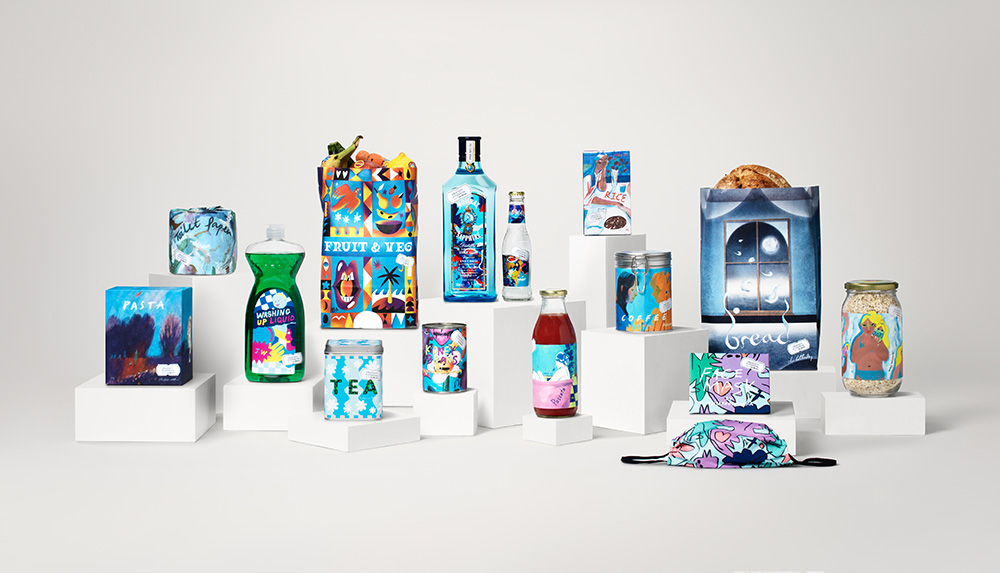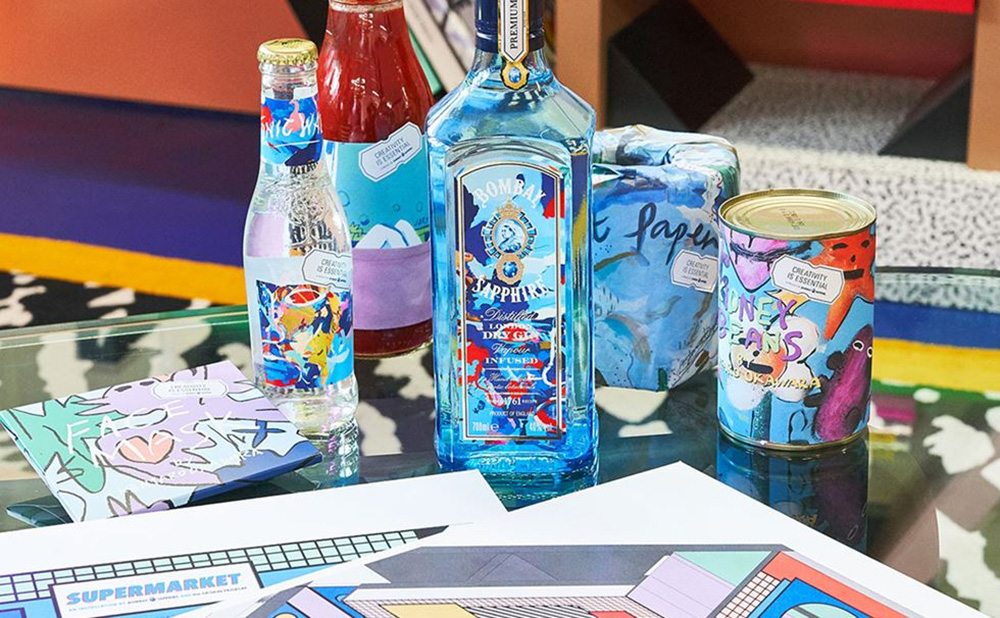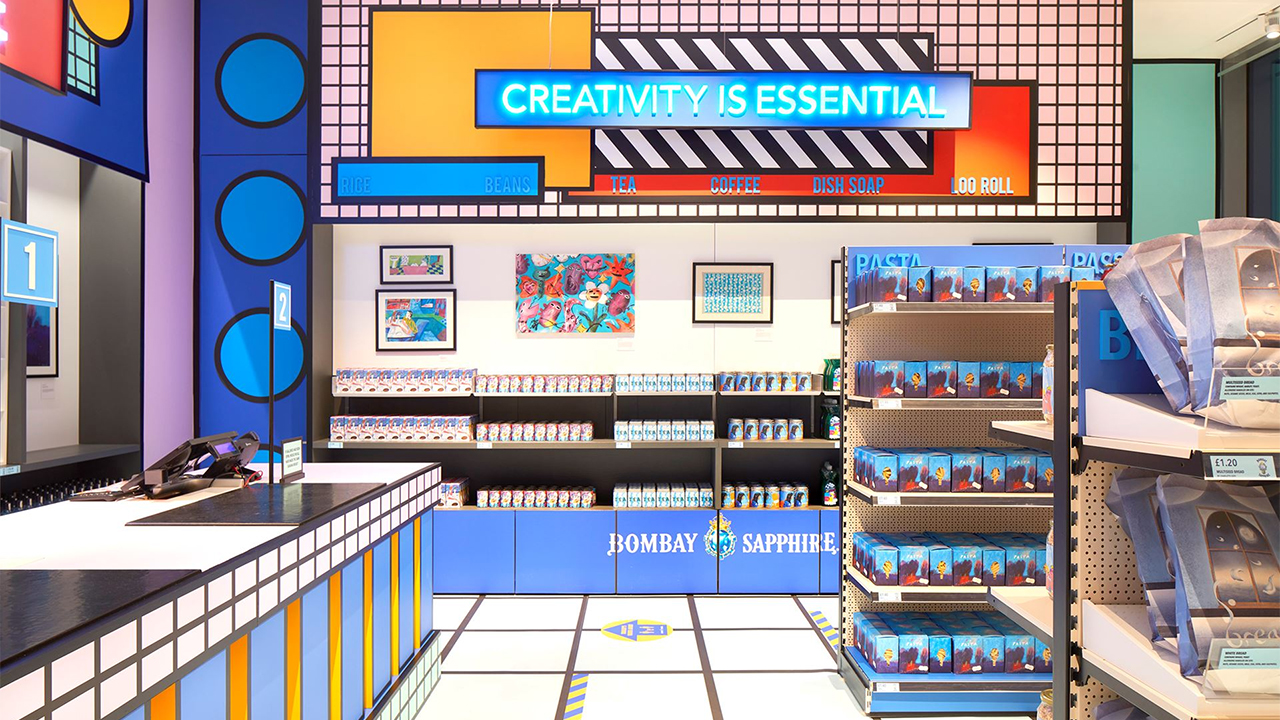On any regular, pre-COVID day, London Design Museum’s standalone shop on Kensington High Street retails a handsomely curated collection of design-focused goods, not limited to kitchenware, coffee table books, and home furnishings. But not so much this week. Until April 25, visitors to the gift shop will find it strikingly transformed: for now, gone is the museum store and in its place, a supermarket. Lining its shelves are familiar lockdown essentials including bags of rice, cans of kidney beans, boxes of pasta, and of course, toilet paper.
Then again, this is no regular supermarket. The richly colored installation, titled Supermarket: Creativity is Essential, has been designed by London-based textile and interior artist Camille Walala, and stocked with limited-edition items packaged in eye-grabbing artworks by 10 emerging designers. Realized in partnership with gin-maker Bombay Sapphire, the project is as much a monument to lockdown reality as it is a boost for the local design community: all proceeds from Supermarket will go toward the institution’s Emerging Designer Access Fund, a pay-it-forward initiative that allows emerging creatives free access to the Design Museum’s programs.

Ten designers, including Holly Warburton, Kentaro Okawara, Michaela Yearwood-Dan, and Joey Yu, have designed packaging for Supermarket‘s products, including fruit bags, dish soap, face masks, and toilet paper. Image: The Design Museum
Why it matters
Lockdown-era engagement — Currently the only cultural institution to have undergone a supermarket pivot, the Design Museum landed on the pop-up for good reason. The UK’s latest COVID measures mandate that art spaces stay closed until May 17, though essential retailers such as grocery stores and banks are allowed to remain open. What’s an enterprising museum to do?
In a pandemic era dominated by digital transformations and virtual programming, the museum’s launch of a lockdown initiative centered on in-person participation is almost refreshing, if not daring. It signals an understanding of how immersive events and installations represent great draws for post-COVID audiences, and considering the art experience on offer, will likely pay off in visitor footfall and social media engagement.

“I wanted to do something a little bit pop and fun,” said Walala, who gave the installation its pop-hued interior and exterior. Image: The Design Museum
A collaborative outing — Bombay Sapphire has never been shy about its support for the arts: since 2010, its Artisan Series of showcases has platformed emerging visual artists, and its Stir Creativity concept, launched in 2018, has messaged self-expression through events and online campaigns. Supermarket marks its rare partnership with a museum — limited-edition Bombay Sapphire bottles, designed by artist Ruff Mercy, are available at the pop-up — and one that highlights the expanding role of sponsorship in arts programming. And particularly so as COVID has left most institutions cash-strapped: the Design Museum, for one, reportedly lost 92 percent of its income in 2020 due to lockdown measures.

Visual artist Ruff Mercy’s reimagining of the Bombay Sapphire label. Image: The Design Museum
Staying agile — Befitting an organization that values forward thought and creativity, the planning and execution of Supermarket took the Design Museum a mere two months, during which it managed to deftly adapt its audience strategy to accommodate lockdown restrictions. “We’re not just about spectacle,” said Tim Marlow, the museum’s Director. “We are about showcasing and researching solutions for the problems we face post-pandemic.”
The Design Museum is not alone in that endeavor: Supermarket joins other projects unveiled over the past year that have attempted audience outreach across socially distant divides. And as these pandemic responses — whether digital or physical — clearly demonstrate, agility and ingenuity on cultural organizations’ part isn’t just possible, but, well, essential.



